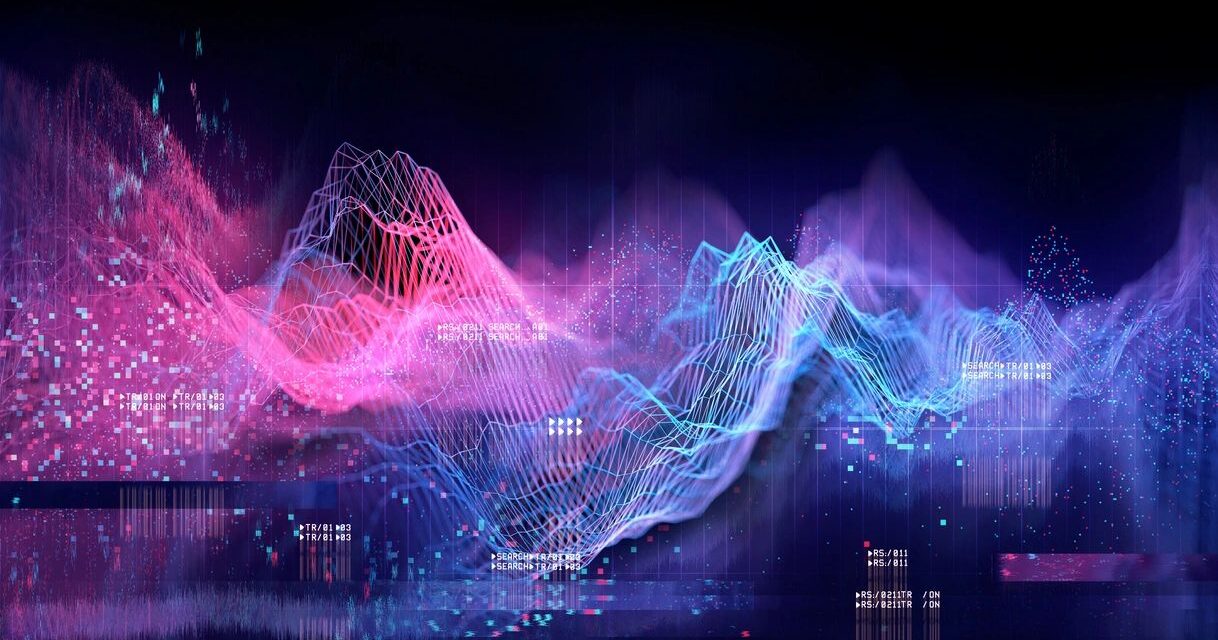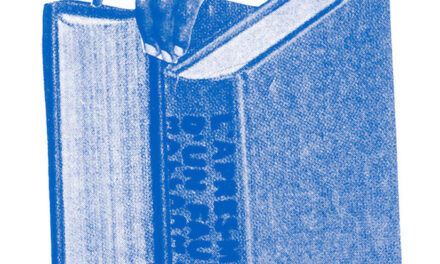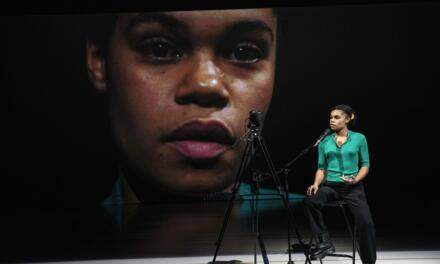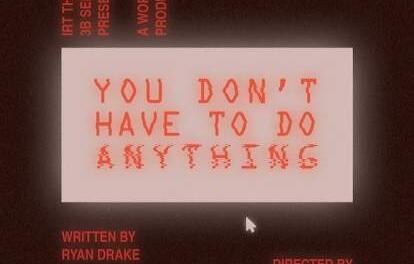Despite being heavily indebted to electronic mediation, the dramatic situation created in contemporary multi-media theatre productions is still performed “live” on stage. If we take into account its relatively stable requirements of an audience and a set duration, we could argue that the theatrical medium represents a heuristic platform to study associative thinking. The stage functions as an interface, facilitating co-presence across physical, technical, and referential boundaries.
Contemporary critical discourses tend to consider the “live” body in performance as a cultural and biological biotope – a construction site for the assemblage of identity and consisting of multiple layers of what Wolf-Dieter Ernst has termed “anthropological ballast” (2012). From this perspective theatre can play an additional role, as a pivotal platform of signification, arising from the invitation it extends from performer to spectator to connect via conscious participation in a “live” event. If accepted, the cognitive communion that ensues will remind all participants of its disruptive constructedness, throughout the event’s duration (see also Rayner, 2002). As recently demonstrated by N. Katherine Hayles, the kind of embodied cognition activated by “live” performers in an intermedial setting “provides the basis for dynamic interactions with the tools it helps to bring into being” (2012). This paper will refer to dramaturge/director John Jesurun’s so-called “pieces in spaces” (1987) – i.e. stage plays where the live, the fictionalized, and the mediatized become blurred in an orgy of analogies across media and genres – to highlight what anthropologist Bradd Shore calls our mind’s “ecological inclination” to fuse a boundless range of unrelated impulses while blurring boundaries of all kinds (1996).
John Jesurun’s Chang In A Void Moon
Weary of endlessly scavenging for funding, would-be independent filmmaker John Jesurun decided one day in the early 1980s to make films without using a camera and “Let the audience be the camera” instead.[1] Pragmatic par excellence, this new approach effectively launched the career of one of multimedia theater’s most inventive innovators, while generating a body of work characteristically concerned with reconciling the apparently irreconcilable. With his main theme of exploring the rampant technologization of contemporary culture and its effects on consciousness and communication alike, Jesurun’s artistic practice challenges one-dimensional interpretations while simultaneously underscoring the processes that constitute our perception. One is struck first by the artist’s incessant interplay with media of all kinds, and next by his texts’ pervasive multilingualism. And yet, as Hans-Thies Lehmann once observed, scenography and dramaturgy can only meaningfully meet via the performer’s body.[2]
If we borrow Duke Ellington’s favorite phrase, describing his music as “beyond categories,”[3] John Jesurun’s theater aesthetic could be situated along a paradigm encompassing transgression, fluidity, and blending, moving “beyond” conceptions of “categories” and toward what anthropologists Gregory Bateson and Bradd Shore have called an intrinsically ecological inclination.[4] Operating along with a logic of connecting dispersed content, Jesurun’s emphasis on the performer’s presence in the here-and-now as a semiological nexus generates a sense of mediatized imbrication of all of the performative event’s constituents. Or, as his long-time compagnon de route Bonnie Marranca has argued in her Ecologies of Theater (1996), an organicist conception of contemporary theater that “inquire[s] into the relationship of mind and spirit” via the aegis of the performers’ biological ‘liveness.’”[5]
In what follows, I will pick up the ecological lead, presenting John Jesurun’s inter-medial and inter-relational theater aesthetic as an impetus to what Bateson calls “an ecology of mind”[6] – i.e. an alternative way of thinking and creating that eschews distinctions in favor of convergence and all the emancipatory potential this implies. As early as 1986 one of the characters in Jesurun’s “Media Trilogy” warned spectators that we all “have to realize that [we are] chained into that machine”[7] (emphasis added), imbricated into what Jesurun calls “an ongoing process of detours, pitfalls, and discoveries in interpretation and perception [of] a mediated world.”[8] Five years later, in Blue Heat (1991), he physically separated players from spectators by leaving the stage empty and relocating the action to the venues’ back rooms, as displayed by various screens in “real-time,” thereby forcing his audience to confront theater’s fundamental role as signifying interface.
If performance no longer takes place in the here and now, “live” before an audience, can it still be considered “theater”? This question immediately begs another one, related to the mediation of “live” content – a question even harder to answer. We must cue Jesurun’s presumed ecological aesthetic: his is not an approach aiming for answers, but rather for shifting perspectives and re-evaluating possibilities for both artistic creation and for critical thinking from within “the machine.” As the character, Smith from Deep Sleep explains, “Those are the machines and you are coming out of the machines”[9] (emphasis added). Thus there is no outside to our mediated world – a Jesurunian appropriation, if you like, of Derrida’s famous quip that “Il n’y a pas de hors-texte.”[10] Jesurun ascribes no value judgment to this, being fully aware of the pointlessness of speaking about “pure” or “essential” unmediated meaning. Technology is part and parcel of our cultural landscape today, and, as confirmed by media theorists Neil Postman and Charles Weingartner in Technopoly: The Surrender of Culture to Technology (1993), “technological change” is nothing if not “ecological.”[11]
Considering the “ecological” dimension of technological innovation brings us to Jesurun’s privileged artistic platform: the theater, once described by Peter M. Boenisch as “a semiotic practice, which incorporates, spatializes and disseminates in sensorial terms (thus: performs) the contents and cognitive strategies of other media by creating multiple channels, and a multi-media semiotic and sensorial environment.”[12]
The key to this argument is the almost organic multiplication of signifiers and signifying systems that take place via their interplay in real-time. If we also take into account its relatively stable (but not unproblematic) basic requirements of an audience and a set duration, we could argue that theater is a heuristic platform for studying the associations and reciprocities it generates, being an interface that facilitates co-presence and reflexivity across physical, technical, and referential boundaries.
In a Jesurun multiple media production, the continuous interplay of “live” theatrical presence incarnates an “overdetermined” hybrid permanently in flux. Twenty-five years ago, Patrice Pavis argued that the live actor creates a sense of clarity, an ontological foothold of sorts, within the semiotic complexity of multi-media theater productions.[13] A decade later, Philip Auslander placed the performer’s live body on a par with technological media in contemporary theater’s process of “mediatization,” whereby old and new media operate in the mediatic system that is the production.[14] For live “presence” on a multi-media theater stage remains inextricably interwoven with the relation between “live” and “mediated,” and thus also with what performance scholars Gabriella Giannachi and Nick Kaye have called “processes that expose and utilize the gaps, caesura, and absences inherent to acts of representation”[15] (emphasis added). Their use of “inherent” echoes Jesurun’s ecologically-inspired artistic practice in which the live actor’s performance is embedded in layered and responsive soundscapes, architectonic designs, as well as mediated sets that underscore the actual passages between live, mediated, and recorded channels of address. There are no simplified answers to a complex reality, but a stimulated sense of intimacy with the environment in which we are immersed.
As Baz Kershaw similarly reminds us in his Theater Ecology (2007), the term “ecology” references
the interrelationships of all the organic and non-organic factors of ecosystems, ranging from the smallest and/or simplest to the greatest and / or most complex. It is also defined as the interrelationships between organisms and their environments, especially when that is understood to imply interdependence between organisms and environments.[16]
In White Water (1986), the second installment of his “Media Trilogy” after Deep Sleep (1986), Jesurun sought to connect cutting-edge technology with the fear that the same technology today is destroying our sense of spirituality. By instilling an “ecological” sense of interdependence between film, video, and live actors, he sought to foreground the perspective that technology, in fact, reflects human outreach toward spirituality–a certain longing for the intangible expressed through the tension between humans and machinery – a tension grounded in the ever-present potential of manipulation:
I include [physicality] as a natural element. Because film and video can be manipulated and manipulate at the same time I have to treat them with some respect. Film and video have their own physical presence beyond the visual images they may represent. There is a tension there between a live and mediated performer but this is also natural. I want that tension to also exist in a real way in the presentation. When live and mediated images communicate verbally a third reality comes into place as a result.[17]
Third Reality was made more palpable still in Jesurun’s 1990 production Everything That Rises Must Converge, where both actors and audience were divided into two groups and separated by a wall nine feet high and forty feet long, which occasionally rotated on its central axis while characters communicated their ostensibly nonsensical multilingual dialogues across the divide through live videos and wireless microphones. When no direct physical connection can be established, we entrust technology with making meaningful our attempts at meaning-making.[18] However, the reason that in certain circumstances we may decide (consciously or unconsciously) to “trust” technology in a performative setting is attributable to its embodied presence on stage. After all, embodied modes of reception and perception do not require verification via logical analysis. The theater presents tangible, living bodies on stage to the living bodies in the audience; performers’ and audiences’ embodied receptiveness is thereby stimulated to facilitate effective interpretation. Yet when we take into account the stage’s hypermedial capacity to integrate an endless number of technologies, the embodied dimension stretches toward “ecological” coalitions of mind, body, and technology. It is a perspective that prompted Philip Auslander to conclude that in the theater there simply can be “no clear-cut ontological distinctions between live forms and mediatized ones.”[19]
Today critical discourses tend to consider the “live” body in performance as a cultural and biological biotope – a kind of construction site for the assemblage of identity, consisting of multiple layers of what Wolf-Dieter Ernst has called “anthropological ballast.”[20] Via the continuous interplay of multiple media on stage, theatrical presence today has become a sort of semiological hybrid permanently in flux. John Jesurun’s multi-media bombardment of our senses seems, paradoxically, primarily actor-oriented, especially given his rejection of improvisation and his constant admonitions to “deliver words faster and flatter, faster and flatter.”[21] Indeed, by turning his actors into “de-psychologized talking heads,”[22] he forces his spectators to fill in the blanks. With the actor’s body as an interface between the spectator and the cybernetic machine that is the multi-media stage, the very notion of embodiment becomes unstable. Once again, to Jesurun this is something intrinsically positive:
As a director, I find that the performers are willing to go as far as the language and technology will take them. And as a writer, I am willing to go as far as the performers and technology will take the language. Regardless of the creative outcome, this is a true sharing of intentions and possibilities.[23]
Following Jesurun’s “ecological” aesthetic, embodied presence on a multi-media stage represents a type of “meaning potential” that can only be accessed via the energy exuded from affecting the sender and receiver simultaneously. By means of filmic jump-cuts in the narrative progression, the pulsating pace of a video-clip aesthetic, “super real” / un-theatrical conversation tones, soap-opera cliff-hangers, or the generalized presence of pop-cultural references, a Jesurun piece creates a feeling of familiarity in a thoroughly unsettling environment. The extensive reliance on cutting-edge technology, for one, clashes with a recurring focus on biological decay and linguistic elusiveness. His, then, is a self-professed logic of “engag[ing] rather than seduc[ing]”[24] audiences.
Human perception is a process of constantly decentering and re-centering referential frameworks in response to the stream of new impulses we encounter. The theater can play a heuristic role as a self-reflexive platform of signification via the invitation it extends from performer to spectator to connect through conscious participation in a “live” event. If accepted, the cognitive communion that ensues will remind all participants, for the duration of the event, of its disruptive constructedness.[25] In Jesurun’s relatively recent internet-inspired Firefall (2006 / 2010), old-school metatheatrical devices like self-reference and metalepsis abound, but coupled with reflexive statements on the potential evoked by design, and on the essentialism exuded by philosophy,[26] all aside from a scenography that dramatizes the merging of media into one, uncannily concordant whole. Or, as the character F. (billed as “try[ing] to find a common ground between the introduction of chaos and the status quo”[27]) put it, the characters in Jesurun’s production, are all constantly being “re-morphed, re-transmuted into positive, useful objects.”[28] Earlier in his career, Jesurun used recognizable television-style dramaturgy in Red House (1984) and his “living film serial” Chang in a Void Moon (1982 – ongoing), to help engage his audiences into otherwise unfamiliar theater experiments. In his adaptation Faust / How I Rose (1996) we find another token of this artist’s constant play with recognition and estrangement, mixing catchphrases from well-known advertising slogans, snippets of poetry, and pop song lyrics with aporetic debates on the nature of the universe, all within a set made up of oversized canvases continually projecting lush and dazzling imagescapes. The sequential fluidity of the images contrasts sharply with the abruptness of both the dialogue and the scene switches. They are all examples of an ecological inclination to engage rather than seduce:
A lot of things bother some people with my work. “You can’t have this conversation, it means so much and it only lasts two seconds.” But slowly, as you get into the movement of the whole, it’s like watching a plant grow. When you listen to the conversation and the actors are standing there, fine, but once you start switching and add all kinds of conflicting angles, lights – it even focuses more on the words. It sets up conflicting things and makes the audience think, also, about what is actually happening on stage.[29]
The fact that Jesurun addresses scenography as a catalyst for meta-reflexive thinking aligns him with Philip Auslander’s insight that “the experience of liveness is not limited to performer-audience interactions but refers to a sense of always being connected to other people, of continuous technologically mediated temporal co-presence with others known and unknown.”[30] “Meaning,” it transpires, is not the result of uncovered content, but of a technologically mediated relational engagement prompted by the “co-presence” of human bodies. The tension between technology’s power of effect and the physical presence of actors on stage generates a sense of reflexivity that is “ecologically” dialectical.[31]
According to Gregory Bateson, this “ecologically” dialectical reflexivity links philosophy, technology, and bodily presence via the energy exuded from their interplay.[32] It is viscerally experienced as the “temporary”[33] product of an embodied cognitive negotiation between conflicting signals and impulses. John Jesurun was once “shocked” when his work was described as “interdisciplinary”: “I don’t really see the boundaries between one [medium] and the other. It seems natural to me that they should work together. They seem to be part of one another. Creatively they are all interconnected.”[34]
Key tenets from embodied cognition postulate that consciousness is produced by the body-mind interface, fueled by our actions and perceptions, but also by nature, culture, and environmental interactions, rather than by some top-down strategy whereby the mind is directing the body.[35] As recently demonstrated by N. Katherine Hayles in her book How We Think: Digital Media and Contemporary Technogenesis (2012), the kind of embodied cognition activated by “live” performers in an inter-medial setting “provides the basis for dynamic interactions with the tools it helps bring into being”[36] (emphasis added). For Chris Salter, such reasoning confirms Jesurun’s claim that distinctions are delusions, since the “supposedly modern tension between the humanistic body and the dehumanized machine that has so occupied us [is], in reality, a fiction.”[37] As I hope this brief introduction to Jesurun’s “ecological” aesthetic has shown, man and machine are in a continuous state of becoming, and their interplay on an intermedial theater stage establishes the latter (technology) as a generative platform for a new “ecology of mind.”
Notes
[1] Quoted in Goldberg, RoseLee. “You Are A Camera,” Artforum International, January 1989, pp. 74-76.
[2] Lehmann, Hans-Thies. Postdramatisches Theater, Verlag der Autoren, Frankfurt am Main, 2001, p. 423.
[3] Quoted in Cerveris, Michael. “Intersection, Crossover and Convergence: Fluidity in Contemporary Arts (A Perspective From the US)” in Svich, Caridad (ed.), Trans-Global Readings: Crossing Theatrical Boundaries, Manchester University Press, Manchester, 2003, p. 15-25, p. 15.
[4] See: Bateson, Gregory. Steps to an Ecology of Mind: Collected Essays in Anthropology, Psychiatry, Evolution, and Epistemology, Jason Aronson, Northvale, 1987; and Shore, Bradd. Culture in Mind: Cognition, Culture, and the Problem of Meaning, Oxford University Press, Oxford, 1996.
[5] Marranca, Bonnie. Ecologies of Theater, Johns Hopkins University Press, Baltimore, 1996, p. xiii.
[6] Bateson, Gregory. op. cit., p.1.
[7] Jesurun, John. “Deep Sleep” (1986). A Media Trilogy: Deep Sleep, White Water, Black Maria. NoPassport Press, New York, 2009, p. 9-106, p. 64.
[8] Quoted in Mapp, Juliette et. al. “Writing and Performance,” PAJ, vol. 34, no. 1, 2012, p. 119-140, p. 122.
[9] Smith in Jesurun, John. “Deep Sleep” (1986). op. cit., p. 67.
[10] Derrida, Jacques. De la grammatologie, Minuit, Paris, 1967, p. 158.
[11] Postman, Neil and Charles Weingartner. Technopoly: The Surrender of Culture to Technology, Vintage, New York, 1993, p. 18.
[12] Boenisch, Peter M. “Aesthetic Art to Aisthetic Act: Theater, Media, Intermedial Performance” in Chapple, Freda and Chiel Kattenbelt (eds.), Intermediality in Theater and Performance, Rodopi, Amsterdam, 2006, p. 103-116, p. 113.
[13] Pavis, Patrice. “Theater and the Media: Specificity and Interference” in Helbo, André, J. Dines Johansen, Patrice Pavis, and Anne Ubersfeld (eds.), Approaching Theater, Indiana University Press, Bloomington, 1991, p. 21-47, p. 22.
[14] Auslander, Philip. “Liveness, Mediatization, and Intermedial Performance,” Degrés, no. 101, 2000, p. e1-e12, p. e8.
[15] Giannachi, Gabriella and Nick Kaye. Performing Presence: Between the Live and the Simulated, Manchester University Press, Manchester, 2011, p. 26.
[16] Kershaw, Baz. Theater Ecology: Environments and Performance Events, Cambridge University Press, Cambridge, 2007, p. 15.
[17] Jesurun quoted in Svich, Caridad. “A Natural Force: John Jesurun in Conversation with Caridad Svich” in Svich, Caridad (ed.), Trans-Global Readings: Crossing Theatrical Boundaries, Manchester University Press, Manchester, 2003, p. 42-46, p. 45-46.
[18] See also: Walkenhorst, Birgit. Intermedialität und Wahrnehmung: Untersuchungen zur Regiearbeit von John Jesurun and Robert Lepage, Tectum, Marburg, 2005, p. 84.
[19] Auslander, Philip. Liveness: Performance in a Mediatized Culture, Routledge, New York, 1999, p. 7.
[20] Ernst, Wolf-Dieter. Der affective Schauspieler: Die Energetik des postdramatischen Theaters, Theater der Zeit, Berlin, 2012, p. 15.
[21] Quoted in Russell, Donn. Avant-Guardian, 1965-1990: A Theater Foundation Director’s 25 Years Off-Broadway, Dorrance, Pittsburgh, 1996, p. 410.
[22] Lehmann, Hans-Thies. op. cit., p. 208.
[23] Quoted in Mapp, Juliette et. al. op. cit., p. 122.
[24] Quoted in Bush, Catherine. “Views From the Top: John Jesurun’s Cinematic Theater,” Theater Crafts, vol. 7, no. 19, 1985, p. 46-49, p. 70-71, p. 48.
[25] See also: Rayner, Alice. “Rude Mechanicals and the Spectres of Marx,” Theater Journal, vol. 54, no. 4, 2002, p. 535-554, p. 548.
[26] Jesurun, John. “Firefall” (2009). Shatterhand Massacree and Other Media Texts, PAJ Publications, New York, 2009, p. 165-212, p. 178.
[27] Ibid., p. 167.
[28] Ibid., p. 194.
[29] Quoted in Rentdorff, Martin. “I’ll Make Film Without Filming It,” Theater: Ex, vol. 1, no. 2, 1985, p. 8.
[30] Auslander, Philip. “Digital Liveness: A Historico-Philosophical Perspective,” PAJ, vol. 34, no. 3, 2012, p. 3-11, p. 6.
[31] See also: Sarkis, Mona. Blick, Stimme und (k)ein Körper: Der Einsatz elektronischer Medien im Theater und in interaktiven Installationen, M & P, Stuttgart, 1997, p. 29.
[32] Bateson, Gregory. op. cit., p. 11.
[33] Giannachi, Gabriella and Nick Kaye. op. cit., p. 236.
[34] Quoted in Svich, Caridad. op. cit., p. 46.
[35] See: Hirose, Nagoya. “An Ecological Approach to Embodiment and Cognition,” Cognitive Systems Research, vol. 3, no. 3, 2002, p. 289-299.
[36] Hayles, N. Katherine. How We Think: Digital Media and Contemporary Technogenesis, University of Chicago Press, Chicago, 2012, p. 87.
[37] Salter, Chris. Entangled: Technology and the Transformation of Performance, MIT Press, Cambridge, 2010, p. 276.
Works Cited
Auslander, Philip. “Digital Liveness: A Historico-Philosophical Perspective,” PAJ, vol. 34, no. 3, 2012, p. 3-11.
—. “Liveness, Mediatization, and Intermedial Performance,” Degrés, no. 101, 2000, p. e1-e12.
—. Liveness: Performance in a Mediatized Culture. New York: Routledge, 1999.
Bateson, Gregory. Steps to an Ecology of Mind: Collected Essays in Anthropology, Psychiatry, Evolution, and Epistemology. Nothvale: Jason Aronson, 1987.
Boenisch, Peter M. “Aesthetic Art to Aisthetic Act: Theater, Media, Intermedial Performance” in Chapple, Freda and Chiel Kattenbelt (eds.), Intermediality in Theater and Performance. Amsterdam: Rodopi, 2006, p. 103-116.
Bush, Catherine. “Views From the Top: John Jesurun’s Cinematic Theater,” Theater Crafts, vol. 7, no. 19, 1985, p. 46-49, p. 70-71.
Cerveris, Michael. “Intersection, Crossover and Convergence: Fluidity in Contemporary Arts (A Perspective From the US)” in Svich, Caridad (ed.), Trans-Global Readings: Crossing Theatrical Boundaries. Manchester: Manchester University Press, 2003, p. 15-25.
Derrida, Jacques. De la grammatologie. Paris: Minuit, 1967.
Ernst, Wolf-Dieter. Der affective Schauspieler: Die Energetik des postdramatischen Theaters. Berlin: Theater der Zeit, 2012.
Giannachi, Gabriella and Nick Kaye. Performing Presence: Between the Live and the Simulated. Manchester: Manchester University Press, 2011.
Goldberg, RoseLee. “You Are A Camera,” Artforum International, January 1989, p. 74-76.
Hayles, N. Katherine. How We Think: Digital Media and Contemporary Technogenesis. Chicago: University of Chicago Press, 2012.
Hirose, Nagoya. “An Ecological Approach to Embodiment and Cognition,” Cognitive Systems Research, vol. 3, no. 3, 2002, p. 289-299.
Jesurun, John. “Deep Sleep” (1986). A Media Trilogy: Deep Sleep, White Water, Black Maria. New York: NoPassport Press, 2009, p. 9-106.
—. “Firefall” (2009). Shatterhand Massacree and Other Media Texts. New York: PAJ Publications, 2009, p. 165-212.
Kershaw, Baz. Theater Ecology: Environments and Performance Events. Cambridge: Cambridge University Press, 2007.
Lehmann, Hans-Thies. Postdramatisches Theater. Frankfurt am Main: Verlag der Autoren, 2001.
Mapp, Juliette et. al. “Writing and Performance,” PAJ, vol. 34, no. 1, 2012, p. 119-140.
Marranca, Bonnie. Ecologies of Theater. Baltimore: Johns Hopkins University Press, 1996.
Pavis, Patrice. “Theater and the Media: Specificity and Interference” in Helbo, André, J. Dines Johansen, Patrice Pavis, and Anne Ubersfeld (eds.), Approaching Theater. Bloomington: Indiana University Press, 1991, p. 21-47.
Postman, Neil and Charles Weingartner. Technopoly: The Surrender of Culture to Technology. New York: Vintage, 1993.
Rayner, Alice. “Rude Mechanicals and the Spectres of Marx,” Theater Journal, vol. 54,no. 4, 2002, p. 535-554.
Rentdorff, Martin. “I’ll Make Film Without Filming It,” Theater: Ex, vol. 1, no. 2, 1985, p. 8.
Russell, Donn. Avant-Guardian, 1965-1990: A Theater Foundation Director’s 25 Years Off-Broadway. Pittsburgh: Dorrance, 1996.
Salter, Chris. Entangled: Technology and the Transformation of Performance. Cambridge, MA: MIT Press, 2010.
Sarkis, Mona. Blick, Stimme und (k)ein Körper: Der Einsatz elektronischer Medien im Theater und in interaktiven Installationen. Stuttgart: M & P, 1997.
Shore, Bradd. Culture in Mind: Cognition, Culture, and the Problem of Meaning Oxford: Oxford University Press, 1996.
Svich, Caridad. “A Natural Force: John Jesurun in Conversation with Caridad Svich” in Svich, Caridad (ed.), Trans-Global Readings: Crossing Theatrical Boundaries. Manchester: Manchester University Press, 2003, p. 42-46.
Walkenhorst, Birgit. Intermedialität und Wahrnehmung: Untersuchungen zur Regiearbeit von John Jesurun und Robert Lepage. Marburg: Tectum, 2005.
This article was originally posted at Archée and has been reposted with permission. To read the original article, click here.
This post was written by the author in their personal capacity.The opinions expressed in this article are the author’s own and do not reflect the view of The Theatre Times, their staff or collaborators.
This post was written by Christophe Collard.
The views expressed here belong to the author and do not necessarily reflect our views and opinions.


















